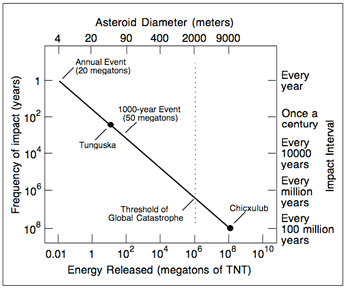He [Raven] looked about and thought there was nothing on the land as lively as the fish in the water, so he made the shrew-mice, for he said, “They will skip about and enliven the ground and prevent it from looking dead and barren, even if they are not good for food.” – from Clara Bayliss’s 1909 collection A Treasury of Eskimo Tales.
Creation myths aside, our early mammalian ancestors were little omnivorous insectivores very much like modern shrews. Mammals evolved some 200 million or so years ago and lived alongside the dinosaurs, but did not grow to large size until millions of years after the dinosaurs went extinct some 65 million years ago.
Today we are a diverse group of flying, swimming, and running creatures ranging in size from the blue whale 120 feet long with a heart the size of a small car down to shrews no more than a few inches long, weighing less than an ounce. We don’t know much about our early ancestors, small terrestrial creatures rarely leave fossil remains, but from what we can tell it seems that the shrew body design and hunting strategy is extremely successful and has remained a persistent mammalian body plan.
Shrew-like creatures live all over the world and are renowned for their ferocity, appetite, boldness, and their unusual (at least in mammals) venomous bite. Here in Vermont the shrew you are most likely to encounter is the Northern Short-Tailed Shrew (Blarina brevicauda). As near as I can make out, Blarina roughly translates to “nose-necked” and brevicauda actually does mean “short-tailed”, making this one of the few animals that has a matching common and scientific name. Shrews are in the Soricidae family, which just means, “the shrew family.”
Shrews move rapidly, driven by their rapid metabolism and resulting need to eat constantly. They move with a peculiar blend of short, jerky twitches and weasel-like fluidity. The shrew in the photos was hunting for insects and earthworms in freshly cut grass. I followed it for perhaps 200 feet, and during that time it only stopped to sniff out prey, to eat it, and to hide from the dog that wanted to know what I was watching so avidly.
Like many predators, shrews are curious, engaging in high risk, high reward activities. Their eyesight is poor, but their sense of smell is excellent. How good their hearing is seems to be uncertain, some people thinking it is good, others poor. I suspect that it is pretty good and that they are sensitive to vibrations via their whiskers and feet.
Unlike many animals the shrew had no fear of me what-so-ever, not even flinching when I stroked its back as it ate one of the 4 earthworms it caught while I was watching. Every small animal nearby, on the other hand, was terrified of the shrew. Insects froze into immobility, antennae twitching and heads slowly tracking as the shrew passed by. Well should these creatures be wary of the shrew. If a shrew goes more than a few hours without eating it will starve to death.
Short-Tailed shrews are tiny, massing between 2 and 5 US quarters (about .5 to 1 ounce), but they are perfectly capable of killing and eating prey several times their size. There is a 3 minute National Geographic TV video of a shrew exploring a garden, then killing and eating a garter snake much larger than itself. Most of the time shrews will content themselves with insects, worms, and seeds.
Shrew fur is thick and dense, like the fur of an otter, but lacking the oily guard hairs. The fur is so dense that it is waterproof, allowing some species of shrew to hunt underwater. Shrews need this dense fur to keep warm through the winter. Their small size means they lose heat quickly, necessitating both a rapid metabolism and good insulation. In winter they remain beneath the snow as much as possible, eating cached food, keeping activity to a minimum, and burning brown adipose tissue (what we commonly call “brown fat”) to keep warm without resorting to shivering.
They have as many predators as they have prey, but their venom and unpleasant musk helps to keep some mammalian predators at bay.
Shrews are tremendously strong for their size. I could see the back and neck muscles bulging as this shrew pulled earthworms from the soil. It pulled a short section of the worm from the ground and ate it, pulled another short bit, ate that, and continued, as though it was eating Twizzlers at the movies.
We humans are proud of our accomplishments, but perhaps we should be more humble before the little shrew. This tiny creature, so easily killed by a careless foot is upholding 200 million years of successful mammalian tradition, wearing a body design that gave rise to all other mammals from humans to whales, bats to elephants, beavers to monkeys.












